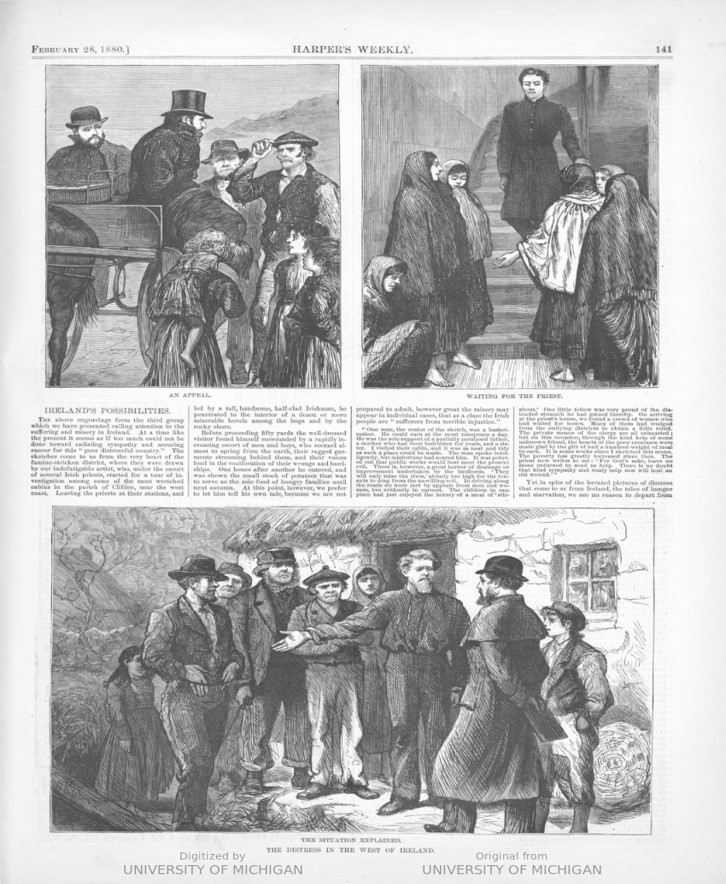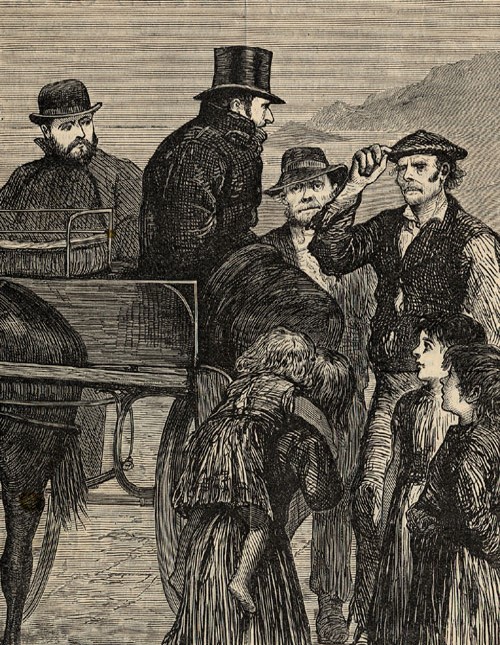Marguérite Corporaal is Full Professor in Irish Literature in Transnational Contexts at Radboud University. Corporaal was awarded a VICI grant by NWO, for her project Redefining the Region: The Transnational Dimensions of Local Colour (2019-24). Furthermore, Corporaal is PI of Heritages of Hunger, which examines legacies of European famines, and is funded through the NWA programme launched by NWO and the Dutch government. Among Corporaal’s recent international publications are Relocated Memories of the Great Famine in Irish and Diaspora Fiction, 1847–70 (Syracuse University Press, 2017); and The Great Irish Famine: Visual and Material Culture (co-edited, Liverpool UP, 2018).
My Research


This paper will present examples of texts and illustrations from The Graphic, Illustrated London News, L’Univers Illustré, Le Petit Parisien and Hollandsche Illustratie, and will discuss illustrations that circulated between magazines such as Illustrated London News, L’Illustration, the Polish Bieszada Literack, Harper’s Weekly and Frank Leslie’s Illustrated Monthly. These include, for instance, »Ireland’s Possibilities«, published in Harper’s Weekly on 28 February 1880 and »Głód w Irlandii« (»Famine in Ireland«), published in Biesiada Literacka on 5 March 1880.
Transferring Connemara: European Illustrated Periodicals as Transnational Agents of Regional Remediation, 1870-95.
Research by, amongst others, Sinnema (1998), Martin (2006) and Smits (2020), has demonstrated the impact of illustrated periodicals during the nineteenth century on the construction of national identities. Illustrated magazines across Europe additionally played a fundamental role in remediating regions and their cultures. The transeuropean and transatlantic networks through which texts and illustrations were transferred (Shattock 2017; Schelstraete & van Remoortel 2019) meant that regions were also reconceptualized across national borders, elsewhere in Europe or in North America. European illustrated periodicals thus constituted »spaces of encounter« (Brake & Codell, 2005: 2) that not only crossed boundaries of gender and class, but, as this paper will argue, regional and transnational borders as well.
This paper will analyze illustrated periodicals as transnational spaces of remediation, reproduction and reception of the region, thereby aiming to contribute to the current transnational turn in periodical studies as well as to shift existing paradigms that identify nineteenth-century regions with nationalisation (Donovan 2010) or support of nation-building (Augusteijn & Storm 2012: 6). It will do so by focusing on representations of Connemara—the western part of Co. Galway, Ireland— in illustrated periodicals such as The Graphic, Le Monde Illustré, and Hollandsche Illustratie, during an era when rural regions in the west of Ireland were marked by agrarian unrest, modernization, emigration, and were at the same time perceived by Celtic Revivalists as sites which crystallized authentic ›Irishness‹ (Castle 2001; Felton 2007).
Furthermore, this paper will pay specific attention to how these images of Connemara were reframed textually, when engravings and woodcuts were exchanged between magazines, thereby mapping out networks of cultural transfer (Stockhurst 2010). In uncovering these processes of transfer, this paper will engage with theoretical frameworks on the dynamics between illustrations and texts (Sinnema 1998, De Moor & Brake 2009)
Abstract
Transferring Connemara: European Illustrated Periodicals as Transnational Agents of Regional Remediation, 1870-95.
Research by, amongst others, Sinnema (1998), Martin (2006) and Smits (2020), has demonstrated the impact of illustrated periodicals during the nineteenth century on the construction of national identities. Illustrated magazines across Europe additionally played a fundamental role in remediating regions and their cultures. The transeuropean and transatlantic networks through which texts and illustrations were transferred (Shattock 2017; Schelstraete & van Remoortel 2019) meant that regions were also reconceptualized across national borders, elsewhere in Europe or in North America. European illustrated periodicals thus constituted »spaces of encounter« (Brake & Codell, 2005: 2) that not only crossed boundaries of gender and class, but, as this paper will argue, regional and transnational borders as well.
This paper will analyze illustrated periodicals as transnational spaces of remediation, reproduction and reception of the region, thereby aiming to contribute to the current transnational turn in periodical studies as well as to shift existing paradigms that identify nineteenth-century regions with nationalisation (Donovan 2010) or support of nation-building (Augusteijn & Storm 2012: 6). It will do so by focusing on representations of Connemara—the western part of Co. Galway, Ireland— in illustrated periodicals such as The Graphic, Le Monde Illustré, and Hollandsche Illustratie, during an era when rural regions in the west of Ireland were marked by agrarian unrest, modernization, emigration, and were at the same time perceived by Celtic Revivalists as sites which crystallized authentic ›Irishness‹ (Castle 2001; Felton 2007).
Furthermore, this paper will pay specific attention to how these images of Connemara were reframed textually, when engravings and woodcuts were exchanged between magazines, thereby mapping out networks of cultural transfer (Stockhurst 2010). In uncovering these processes of transfer, this paper will engage with theoretical frameworks on the dynamics between illustrations and texts (Sinnema 1998, De Moor & Brake 2009).
Recent Publications
Corporaal, M.C.M. (2020). Local-Colour Writers. Figures of Authority? In R. Ingelbien & S. Galavan (Eds.), Figures of Authority in Nineteenth-Century Ireland(pp. 223-238). Liverpool: Liverpool University Press.
Corporaal, M.C.M. (2020). Relocating regionalism: the Fin-de-Siecle Irish local colour tale in transnational contexts. Irish Studies Review, 28(2), 155-170.
Corporaal, M.C.M. (2017). Relocated Memories. The Great famine in Irish and Diaspora Fiction, 1846-1870.Syracuse, NY: Syracuse University Press

